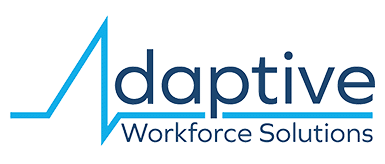5 Things Your Contingent Healthcare Providers Care About In 2018
In the year 2018, contingent healthcare providers make up a large percentage of the healthcare workforce. Contingent healthcare providers are any workers that are hired by a healthcare organization on a short-term, per diem or on-demand basis. Although they may work full-time hours for a period of time, they are excluded from the full-time payroll of any given organization. As healthcare organizations look to avoid contributing to employee benefits like healthcare and retirement plans, the pool of contingent healthcare providers continues to grow larger.
Because contingent healthcare providers make up such a large part of the modern-day healthcare economy, it is especially important to pay close attention to their needs and concerns to ensure exceptional employee engagement and long-term satisfaction among this contingent workforce.
Here are five concerns that contingent workers have in 2018 that employers should take note of for effective healthcare workforce management:
-
Performance Feedback
It is no secret that Millennial workers feel differently about employment and work in general as opposed to their previous generations. However, among performance feedback, there is a stark difference in expectation. Millennials want more feedback regarding their performance more often than previous generations, who prefer less, more informal performance feedback even less frequently. Millennials want to hear how they are performing so that they can continue to build off their prior experiences.
-
Onboard Training and Employee Orientation
Although contingent healthcare providers are not part of the permanent, full-time workforce, they still want to feel like they are a part of the team. They want to be trained as soon as they are hired and they want to quickly become acclimated to the workplace environment and culture that they will be working in. Employee orientation programs are absolutely essential to the overall engagement of your contingent employees. If they feel disconnected, your organization’s employee performance metrics will likely reflect this lack of feeling valuable or a part of the team.

-
Professional Development
Professional development is another concern for contingent healthcare providers. Since they are not on the official full-time payroll of your organization, they look for other perks and benefits since they are missing out on healthcare and retirement plans. Professional development and skill development programs not only foster communication, collaboration, and interaction between full-time healthcare providers and your contingent employees, they also improve the overall engagement of your healthcare workforce. -
Competitive Compensation
Competitive compensation is a concern for every current workforce employee whether they are a part of your full-time workforce or the contingent workforce. However, contingent healthcare providers are even more concerned about their compensation because they are not receiving any company benefits. This also ties into professional development programs because contingent healthcare providers will always search for additional perks and benefits to compensate for the lack of healthcare benefits and retirement options.
-
Room for Advancement
Contingent healthcare providers often place their bets on eventually receiving full-time employment after investing time as a successful and effective temporary business hire. A contingent worker will almost always look at the current business structure of a healthcare organization and look for possible opportunities for advancement to receive a full-time employment offer. While this may not be a deal breaker for organizations that do not present a path towards full-time employment, it is certainly an added benefit for those that do.
In order to retain a stable, high-performing contingent healthcare workforce moving forward, consider their desire for continual feedback, opportunities for growth, professional development resources, competitive compensation, and the overall education, training, and onboarding that they desire to continue performing at top levels.


